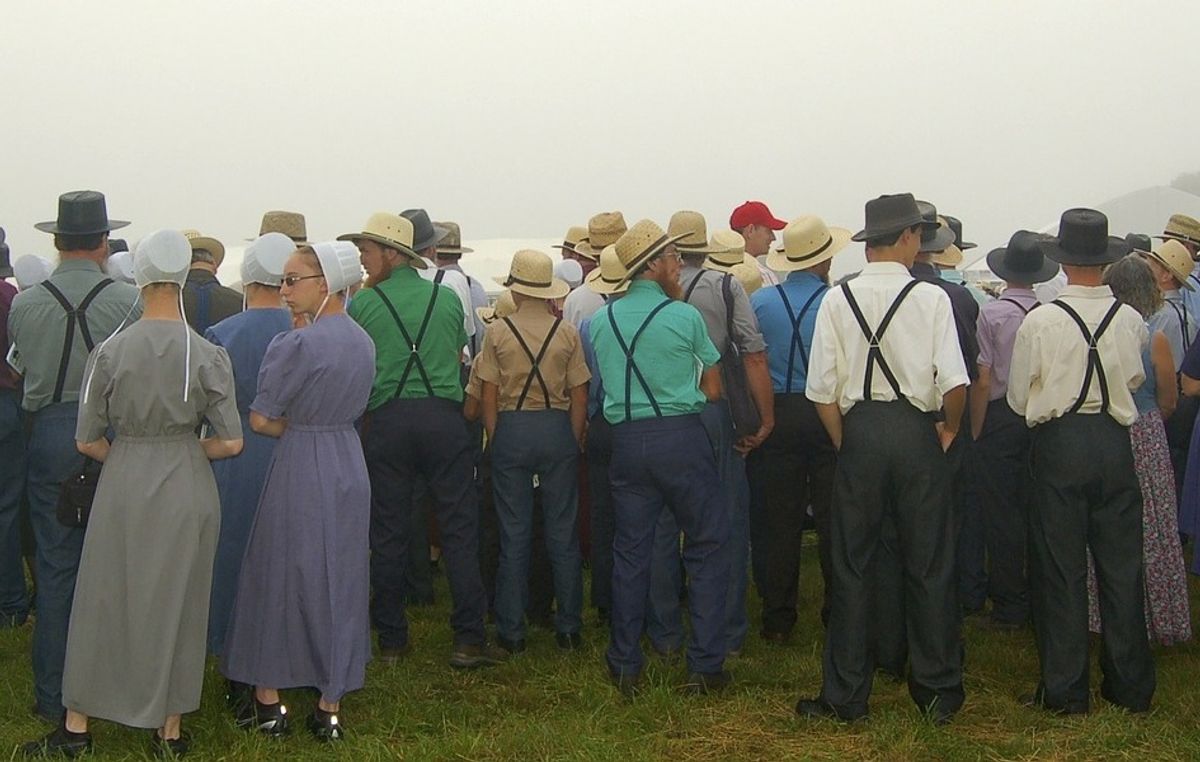Anti-vaccine advocates have, at least since the early 2000s, used the Amish — a group of insular individuals descended from Swiss Anabaptist immigrants who shun modern technology — as a piece of evidence that links autism to vaccines.
This concept gained traction in 2005, when reporter Dan Olmstead conducted a a non-scientific survey in Lancaster County, Pennsylvania (which boasts one of the largest populations of Amish people) to find cases of autism. Controversially, he claimed he could find only three, and that two of the three children had received vaccines:
So far, from sources inside and outside the Amish community, I have identified three Amish residents of Lancaster County who apparently have full-syndrome autism, all of them children. A local woman told me there is one classroom with about 30 “special-needs” Amish children. In that classroom, there is one autistic Amish child. Another autistic Amish child does not go to school. The third is that woman’s pre-school-age daughter. If there were more, she said, she would know it.
This series of stories, published and distributed by the newswire UPI, has been cited in some research papers as if it were an actual scientific study, and is often used as an argument that there is link between autism and vaccines.
The argument that near non-existent rates of autism amongst the Amish are related to a failure to vaccinate rests on two assumptions: 1) that the Amish do not vaccinate their children, and 2) that the Amish do not get autism. Both assumptions are false.
A 2011 study published in the journal Pediatrics surveyed 1,000 Amish parents about their vaccination habits. Of the 359 people who responded:
68% stated that all of their children had received at least 1 immunization, and 17% reported that some of their children had received at least 1 immunization.
These rates are lower than the national average, but to claim that the Amish do not vaccinate their children is false, as a majority of them do vaccinate to some degree.
Furthermore, researchers have documented many cases of autism amongst the Amish populations. Researchers from the University of Miami and Vanderbilt University interviewed 1,899 Amish children from two prominent Amish communities in Holmes County, Ohio and Elkhart-Lagrange County, Indiana. In a 2010 presentation to the International Society of Autism Research, they stated:
Preliminary data have identified the presence of ASD in the Amish community at a rate of approximately 1 in 271 children using standard ASD screening and diagnostic tools although some modifications may be in order. Further studies are underway to address the cultural norms and customs that may be playing a role in the reporting style of caregivers, as observed by the ADI. Accurate determination of the ASD phenotype in the Amish is a first step in the design of genetic studies of ASD in this population.
Additionally, there is an actual clinic (The Clinic for Special Children) devoted to researching developmental diseases in Amish children and this clinic (among many other things) actively researches the occurrence of autism in Amish (and Mennonite) communities. This center is located in Lancaster, PA—the same place that Dan Olmstead searched for cases of Autism in 2005.
Counter to the claims that the Amish do not vaccinate and do not get autism are the facts that a majority of Amish people vaccinate their children and that Amish people are, in fact, diagnosed with autism. Though it is true that their vaccination rates are lower, and that — at least according to preliminary studies — their rates of autism occurrence are also lower, this observation in no way validates the idea — popularized by a fraudulent, retracted study by a doctor with a financial interest in promoting a different vaccine — that vaccines cause autism.
There are many factors that could explain apparent differences between the Amish population and the United States as a whole. These include a potential bias toward increased diagnosis in non-Amish communities, or the fact that the uniquely reduced genetic diversity of the Amish population plays a role.
This content was originally published here.
